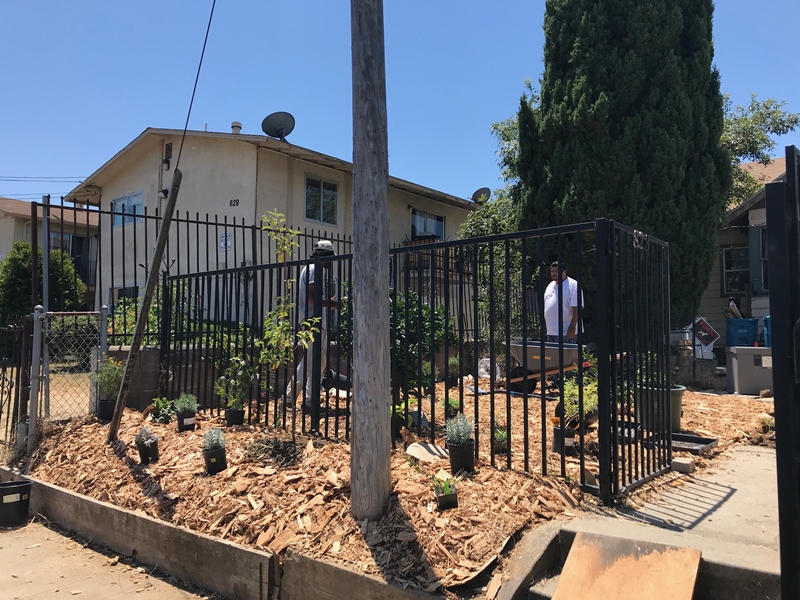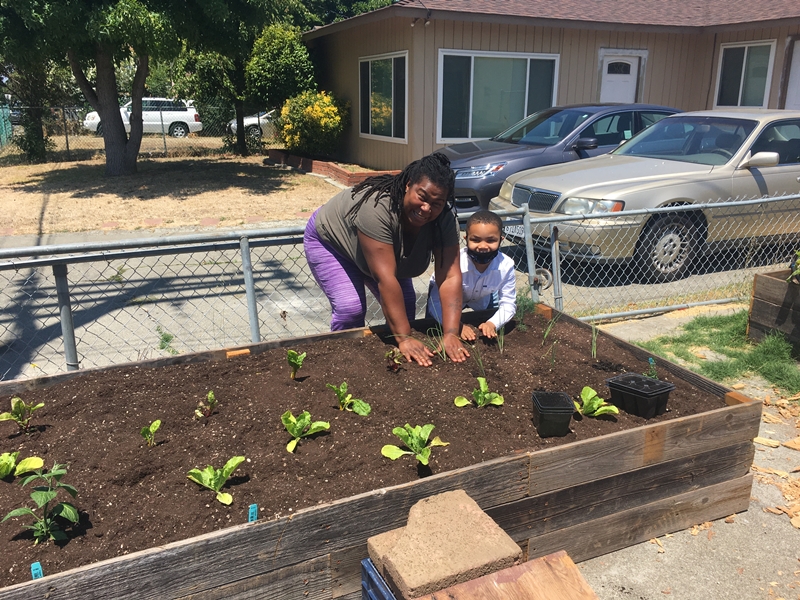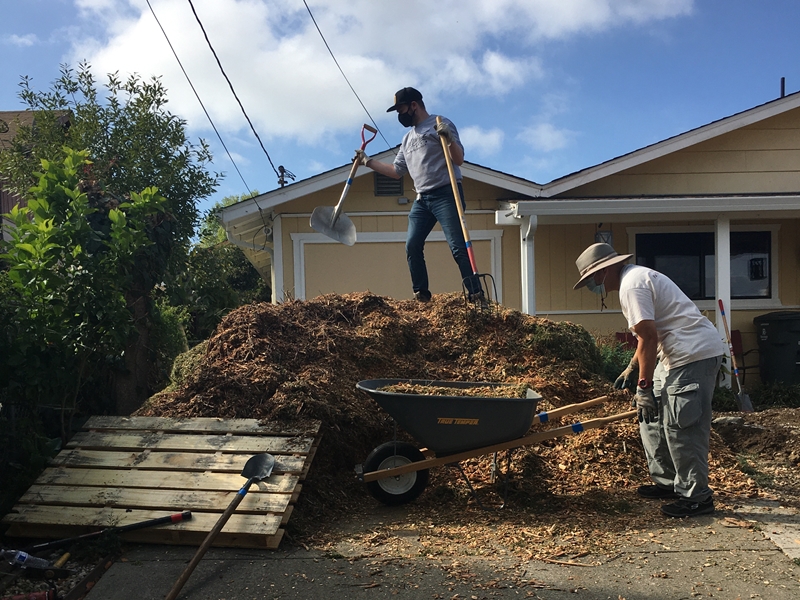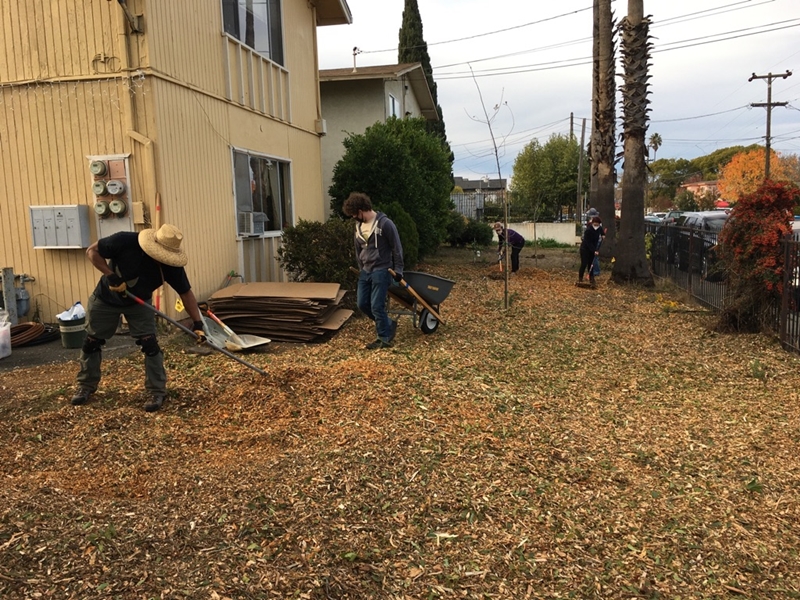Growing Together
Vallejo Resilient Neighborhood




Neighbor Team: Kywanna, Luis, Noemy & Mohamad
Design and Scope:
Permaculture designer Ojan Mobedshahi designed each home to address its unique features and challenges, which included getting creative working around hardscape, existing vegetation, designing for smaller spaces, and designing for shared spaces in the case of the apartment complex. These challenges presented unique opportunities to focus on stacking functions, which means each element provides more than one function in the garden, like fruit trees producing food and shade or repurposed materials to either build raised planters where access to the soil is not possible, or using rocks already on site to put inside the swales.
Shade and Temperature Regulation: 14 trees were selected and placed at the sites to help regulate temperature, while many also provided the added benefit of producing food. The new understory vegetation also plays an important role in reducing the ambient air temperature through transpiration, which moves water through the plant from the soil to the leaves where it can evaporate and cool the air. Two shade sails were installed in two of the homes to provide much-needed cover to exposed hardscape. Shade sails are an effective, low-cost way to help regulate temperature where planting vegetation is not possible.
Water: Roofwater was diverted into swales where feasible to reduce runoff and help recharge groundwater, and each yard was sheet mulched to improve the water-holding capacity of the soil and reduce moisture loss to evaporation.
Sustainable Landscaping and Food Production: The homes incorporated fruit trees and shrubs along with an assortment of edible perennials, herbs and pollinator plants. The varieties of plants were strategically chosen to provide diversity across the homes and produce a varied crop of food to be shared between the neighbors. Two raised bed vegetable gardens were constructed from reclaimed wood to provide growing space for annuals on top of hardscape, wine barrels were added to house smaller fruit trees on top of paved areas, and edible perennial vines were used to maximize growing area in a small space. In an effort to maximize both the use of space and the increase temperature regulation, we also used fruit-producing vines that will grow along the already existing fence.
Plant Varieties:
Below is a list of some of the plant varieties used across the homes in Growing Together.
Coast Live Oak, Meyer Lemon, Pink Lady Apple, Mexicola Avocado, Blenheim Apricot, Santa Rosa Plum, Pineapple Guava, Mandarin, Valley Oak, Purple Fig, Mulberry, Nectarine, Elderberry, Bay Laurel, American Sycamore
Installation:
The installation of this second Resilient Neighborhood took place in various stages. It was planned as a series of Saturday workdays in July 2020. Because of the COVID-19 pandemic and social distancing mandates, we were unable to hold the public educational workshops that are foundational to the program and building community connections. Instead, we worked individually with each homeowner, bringing the designer and Sustainable Solano support staff together to complete the work while ensuring the neighbor-team received in-depth training and information on the installation of their new gardens. The neighbor-team worked incredibly hard to complete the installations, unable to rely on the support of their larger community, and we commend them for their flexibility, perseverance and humility as we navigated these uncertain times. We hope that in the future these homes can host workshops to build skills and teach techniques that we would have loved to include during the installation process.
After the first two homes were installed, one of the neighbors was interested in a garden. While there were a lot of fruit trees in her front yard already, looking at the spirit of the program of connecting neighbors to each other, it became clear that this was the right move. Taking the necessary precautions, we became creative in figuring out how we could bring in volunteers while keeping safety protocols in place. Some of the strategies we used included spacing out a work day into one-hour increments and limiting participants who signed up together only if they were part of a social bubble. Tools were sanitized after people used them and face masks were required to participate.
Through this approach, we were able to install two more gardens during the pandemic: one home and one apartment complex.
Hopes for the Future:
While the Growing Together Resilient Neighborhood garden installations are complete, we are always looking for ways to expand the work we do in the communities we serve and work with. Hopes for the future include working with the city to expand on this second Resilient Neighborhood and include the rest of the street in participating in this program.

